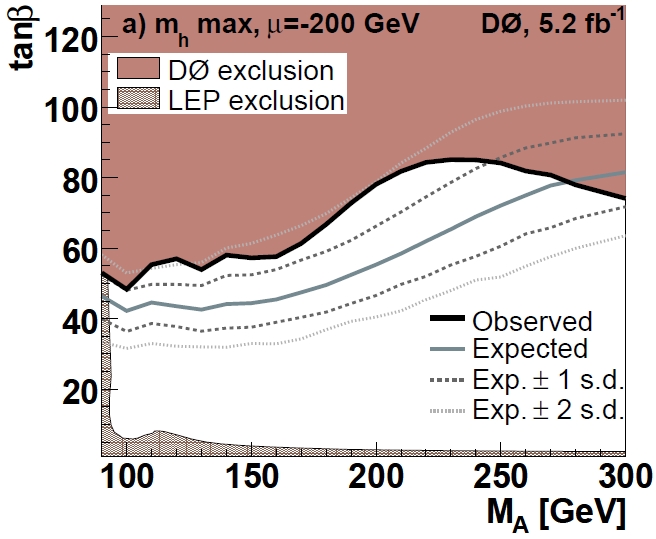This has in the past been a field where interesting excesses have appeared in CDF and DZERO data, (and even a source of uncontrolled rumors three years ago) although arguably the hard-to-model QCD background has always been the principal suspect of the effects.
The new result by DZERO constrains further the space of MSSM parameters, whose typically displayed slice is the plane of A mass versus tangent of beta, the ratio of vacuum expectation values of the Higgs to up- and down- fermions. You can see the results in the figure below (which corresponds to a particular choice of some of the MSSM scenario parameters, in this case called "mh-max"):

It is simple to realize that while significant progress is made in the reduction of allowed parameter space (the area left white in the plane), the search returns a less stringent limit than expected. As in former cases, the observed limit lies within the 1- and 2-sigma "unlucky" bands, the dashed curves of expected limits.
This means that the size of the data, the applied search method would yield on average a more stringent limit. And as in former cases, my explanation is not that of a statistical fluctuation, but rather, that the QCD background has been somewhat underestimated.
I can't wait for an update of the DZERO search for a parallel signature of MSSM Higgses, the one involving tau leptons. It will be quite interesting to see whether the excess seen there in the previous instantiation of the analysis remains with the added data.





Comments